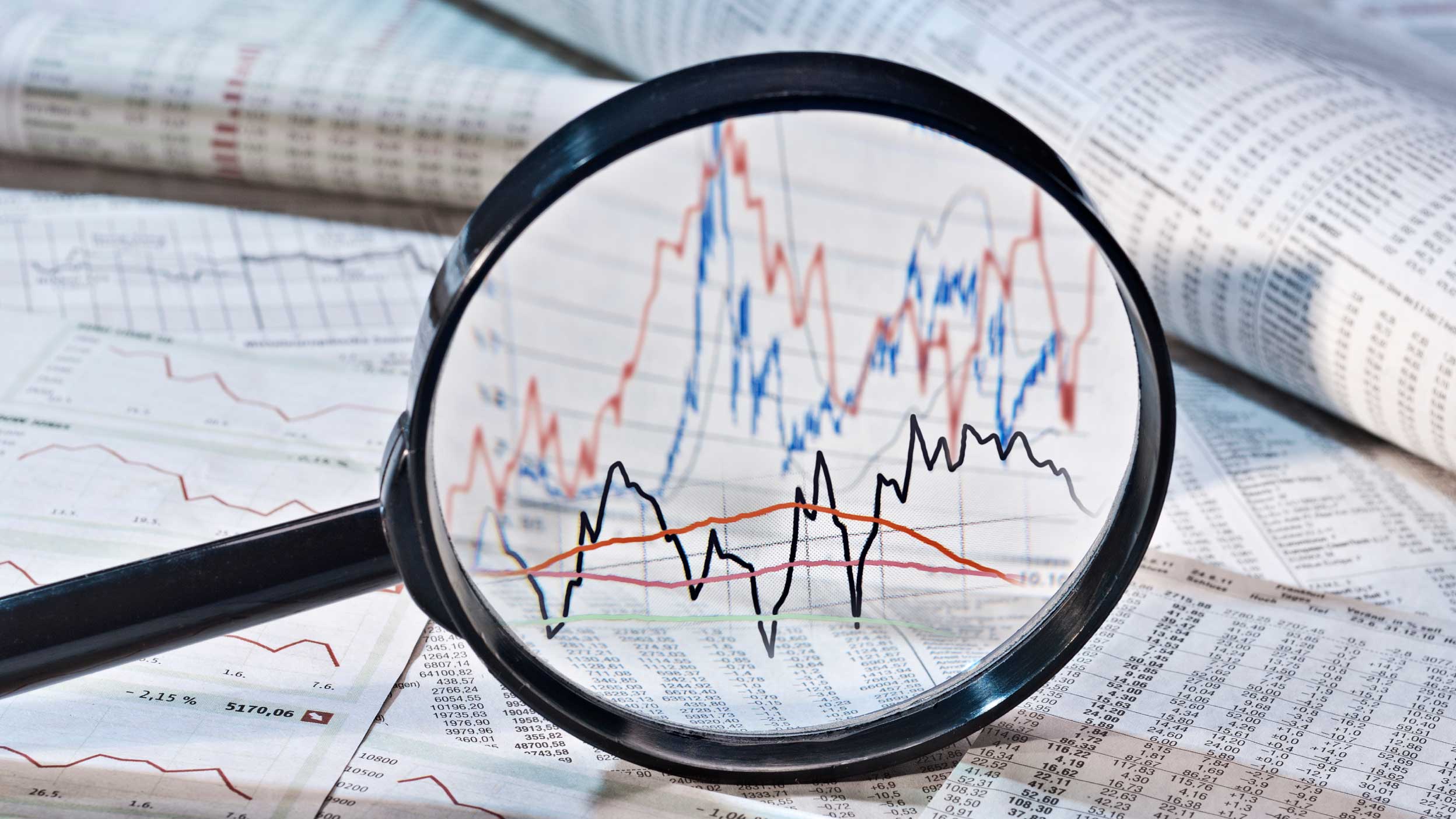
The strategic advantage of AAA-rated CLO Notes
Invesco Private Credit’s Kevin Petrovcik discusses new developments for AAA-rated Collateralised Loan Obligation (CLO) note investments and their potential advantages.

The S&P 500 Equal Weight index has outperformed the standard market-cap weighted version over the long term.1
The S&P 500 index has seen concentration in the largest stocks rise to record highs and valuations stretched, driven by the Magnificent Seven.
History shows that markets often revert to the mean, which could present an opportunity for investors looking to gain diversified exposure to US equities.
The equal weight version of the S&P 500 index outperformed the standard, market-cap weighted index by an average of 1.05% annually, until 2023i. Since then, however, the S&P 500 Equal Weight Index has underperformed, as the returns of the Magnificent Seven (“Mag7”) stocks have overshadowed the rest of the index. Many of today’s investors may wish to consider gaining exposure to the S&P 500 Equal Weight index because of three factors: high concentration, stretched valuations and mean reversion of excess returns.
At the end of Q3 2024, 35% of the weight in the S&P 500 was in just 10 companies, and this handful of companies contributed to over half the S&P 500’s volatility (see Fig.1). This is the highest concentration level in the S&P 500 since the late ‘70s, and many of these highly volatile names sit in similar industries, leading to higher pairwise correlation in the top 10 names than the broader index. This further exacerbates the S&P 500’s concentration problem.
Market-cap weighting naturally underweights the future disruptors. The current top 10 represented a mere 3% of the S&P 500 index 20 years ago. Over these two decades, the top 10 names have contributed 23% to the index’s return, but this rose to over 70% in the first half of 2024ii. Market breadth normalised in Q3, so will this trend of mean reversion continue?
High valuations in mega caps have pushed the S&P 500’s P/E ratio to 28.0 (see Fig.2), a 28% premium over S&P 500 Equal Weight. Historically, over the past 20 years, equal weight and cap-weighted S&P 500 indices have had similar P/E ratios. The divergence widened during COVID as the shift to working from home benefited many technology names. The excitement surrounding AI propelled the S&P 500’s valuations even further.
The anticipation of high growth across select companies often drives rising valuations and increased market concentration, as has been witnessed recently. Historically, over the past 30 years, it has been challenging for these “superstar” companies to sustain exceptional growth over extended periods. Over time, these companies often revert towards normalcy, leading to market valuations and concentration mean-reverting. For example, over the past 30 years, only 3% of companies stayed in the top quintile for sales growth for three consecutive years (see Fig.3).
An equal weighted approach may help mitigate some of the valuation risk present in the S&P 500 and its current tilt towards growth. This mitigation may provide less sensitivity to lowered growth expectations.
The S&P 500 Equal Weight index is currently recovering from its worst 12-month relative drawdown in the past 20 years (see Fig.4), driven by historically narrow market performance. In Q3 2024, market breadth expanded and reverted to median levels, benefiting diversified strategies like equal weight.
Historically, high market concentration in the S&P 500 has often been followed by increased market breadth, which over longer time periods has often benefited the S&P 500 Equal Weight’s performance relative to the S&P 500 index.
During 2021, the Mag7 led performance, returning 51.5% v the S&P 500’s 28.7%, but it peaked towards the end of that year and mean-reverted in 2022. During this time of mean-reversion, Equal Weight outperformed the Mag7 by 34%. This story began again in 2023, with the Mag7 driving 61% of the market’s return through June 2024iii. In Q3 2024, the market scrutinised AI’s valuations and the timeline for realising their earnings expectations plus the Fed’s rate cuts led to market breadth expansion and the other 493 names in the S&P 500 outperforming the Mag7iv.
With the S&P 500’s market concentration near multi-decade highs along with stretched valuations, the need for diversification continues to resonate and many investors are turning to equal weight to diversify their portfolio.
We offer investors a choice between physical and swap-based exposures to the S&P 500 Equal Weight index.
The Invesco S&P 500 Equal Weight UCITS ETF uses physical replication, meaning it buys and holds all the constituents of the S&P 500 Equal Weight index, in the same proportion, and rebalances quarterly when the index does.
The Invesco S&P 500 Equal Weight Swap UCITS ETF uses a swaps-based approach to replicate the performance of the index. The ETF holds a basket of quality securities, but not necessarily those in the index, and uses swap contracts to provide the return of the index.
An investment in either of these funds is an acquisition of units in a passively managed, index-tracking fund rather than in the underlying assets owned by the fund.

Invesco Private Credit’s Kevin Petrovcik discusses new developments for AAA-rated Collateralised Loan Obligation (CLO) note investments and their potential advantages.

Gold had a remarkable month, gaining 9.3% after breaking through US$3,000 and ending March at US$3,124. Economic and geopolitical uncertainty drove the gold price higher ahead of the trade tariffs scheduled to be announced on 2 April. Discover insights into the key macro events and what we think you should be keeping your eyes on in the near term.

Bond markets struggled in March, primarily due to concerns about the potential impact of upcoming US policies. Read our latest thoughts on how fixed income markets fared during the month and what we think you should be looking out for in the near term.
1 Source: Bloomberg, annualised return between 1989 and 2023
i Source: FactSet, 30 April 1999 to 31 December 2022
ii Source: FactSet, analysing the weight in the top 10 companies of the S&P 500 from 30 April 1999 to 30 September 2024. Return attribution is isolating the average annualised company return of the largest 10 companies by market cap in the S&P 500 monthly over the past 20 years and over the past year versus the average company in the index.
iii Source: FactSet, 1 January 2023 to 30 June 2024
iv Source: Bloomberg. S&P 500 companies excluding Mag7 returned 9.6% v Mag7 companies 5.4%
10 year performance table
Performance of indices (%) |
Oct '23 - |
Oct '22 - |
Oct '21 - |
Oct '20 - |
Oct '19 - |
Oct '18 - |
Oct '17 - |
Oct '16 - |
Oct '15 - |
Oct '14 - |
Dec '23 - |
Dec '22 - |
Dec '20 - |
S&P 500 Net Total Return |
37.42% |
9.59% |
-15.01% |
42.29% |
9.09% |
13.63% |
6.73% |
22.87% |
3.83% |
4.55% |
21.70% |
25.67% |
31.24% |
S&P 500 Equal Weight Net Total Return |
31.35% |
-1.32% |
-10.35% |
48.51% |
-0.06% |
12.13% |
3.99% |
19.72% |
5.04% |
2.24% |
14.67% |
13.17% |
28.53% |
Returns may increase or decrease as a result of currency fluctuations. Source: Bloomberg, Invesco, Performance as a 31 Oct 2024. Past performance does not predict future returns.
For complete information on risks, refer to the legal documents.
The value of investments, and any income from them, will fluctuate. This may partly be the result of changes in exchange rates. Investors may not get back the full amount invested.
The value of equities and equity-related securities can be affected by a number of factors including the activities and results of the issuer and general and regional economic and market conditions. This may result in fluctuations in the value of the fund.
As this fund invests in companies from a single country, investors should be prepared to accept a higher degree of risk than an ETF that is geographically diversified.
The fund may be exposed to the risk of the borrower defaulting on its obligation to return the securities at the end of the loan period and of being unable to sell the collateral provided to it if the borrower defaults.
Applicable only to Invesco S&P 500 Equal Weight Swap UCITS ETF: The Fund’s ability to track the benchmark’s performance is reliant on the counterparties to continuously deliver the performance of the benchmark in line with the swap agreements and would also be affected by any spread between the pricing of the swaps and the pricing of the benchmark. The insolvency of any institutions providing services such as safekeeping of assets or acting as counterparty to derivatives or other instruments, may expose the Fund to financial loss. The Fund might purchase securities that are not contained in the reference index and will enter into swap agreements to exchange the performance of those securities for the performance of the reference index.
Data as at 13 January 2025 unless otherwise stated.
By accepting this material, you consent to communicate with us in English, unless you inform us otherwise. This is marketing material and not financial advice. It is not intended as a recommendation to buy or sell any particular asset class, security or strategy. Regulatory requirements that require impartiality of investment/investment strategy recommendations are therefore not applicable nor are any prohibitions to trade before publication.
Views and opinions are based on current market conditions and are subject to change. For information on our funds and the relevant risks, refer to the Key Information Documents/Key Investor Information Documents (local languages) and Prospectus (English, French, German), and the financial reports, available from www.invesco.eu. A summary of investor rights is available in English from www.invescomanagementcompany.ie. The management company may terminate marketing arrangements.
UCITS ETF’s units / shares purchased on the secondary market cannot usually be sold directly back to UCITS ETF. Investors must buy and sell units / shares on a secondary market with the assistance of an intermediary (e.g. a stockbroker) and may incur fees for doing so. In addition, investors may pay more than the current net asset value when buying units / shares and may receive less than the current net asset value when selling them. For the full objectives and investment policy please consult the current prospectus.
This product is offered in Belgium under the Public Offer Exemption. This material is intended only for professional investors and may not be used for any other purpose nor passed on to any investor in Belgium.
The "S&P 500 Equal Weight Index" is a product of S&P Dow Jones Indices LLC or its affiliates (“SPDJI”), and has been licensed for use by Invesco. Standard & Poor’s® and S&P® are registered trademarks of Standard & Poor’s Financial Services LLC (“S&P”); Dow Jones® is a registered trademark of Dow Jones Trademark Holdings LLC (“Dow Jones”); and these trademarks have been licensed for use by SPDJI and sublicensed for certain purposes by Invesco. The Invesco S&P 500 Equal Weight UCITS ETF is not sponsored, endorsed, sold or promoted by SPDJI, Dow Jones, S&P, or their respective affiliates and none of such parties make any representation regarding the advisability of investing in such product(s) nor do they have any liability for any errors, omissions, or interruptions of the "S&P 500 Equal Weight Index".
EMEA4113871 /2024